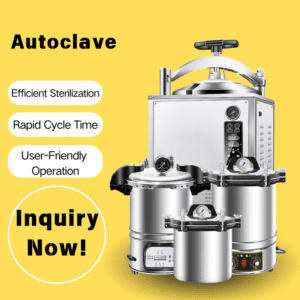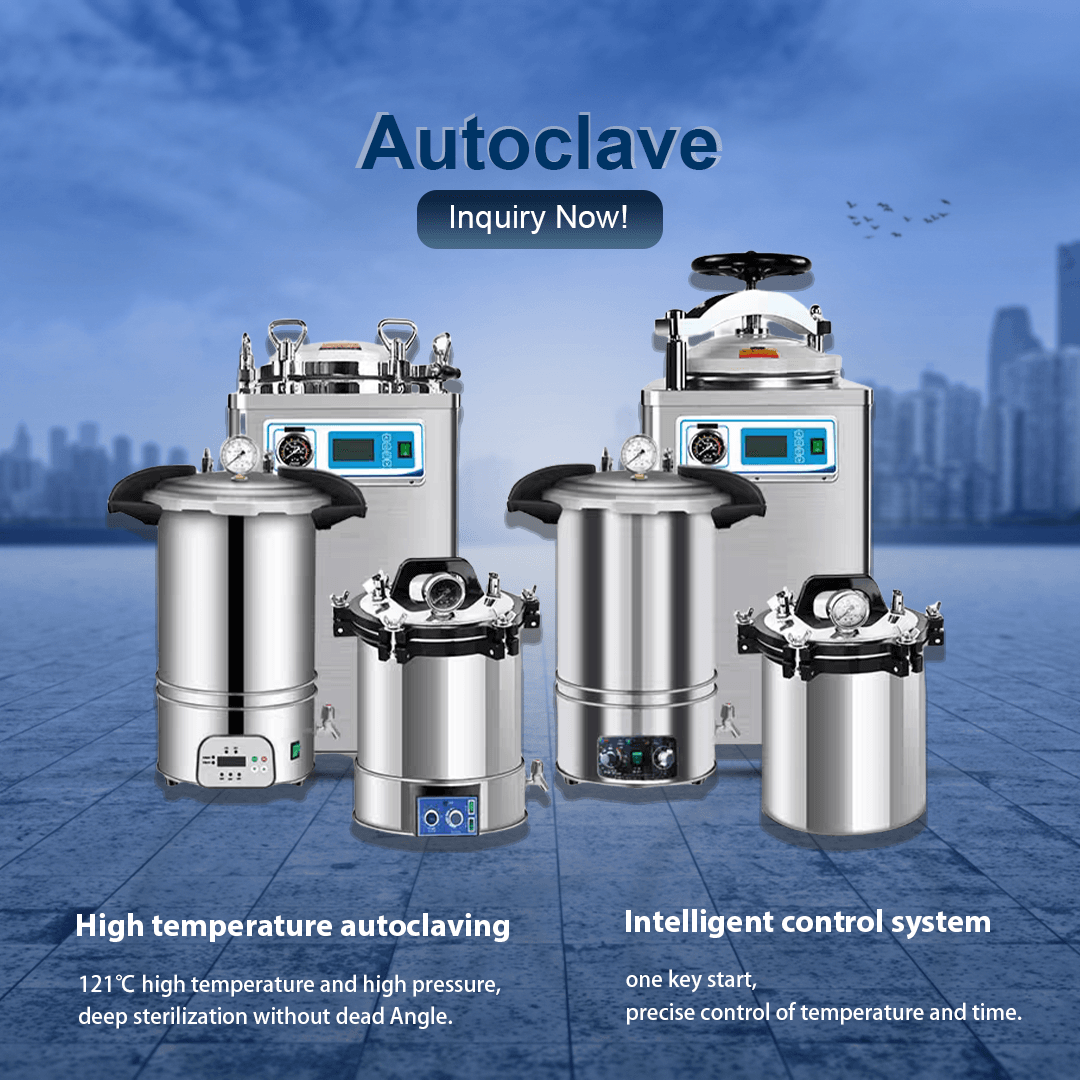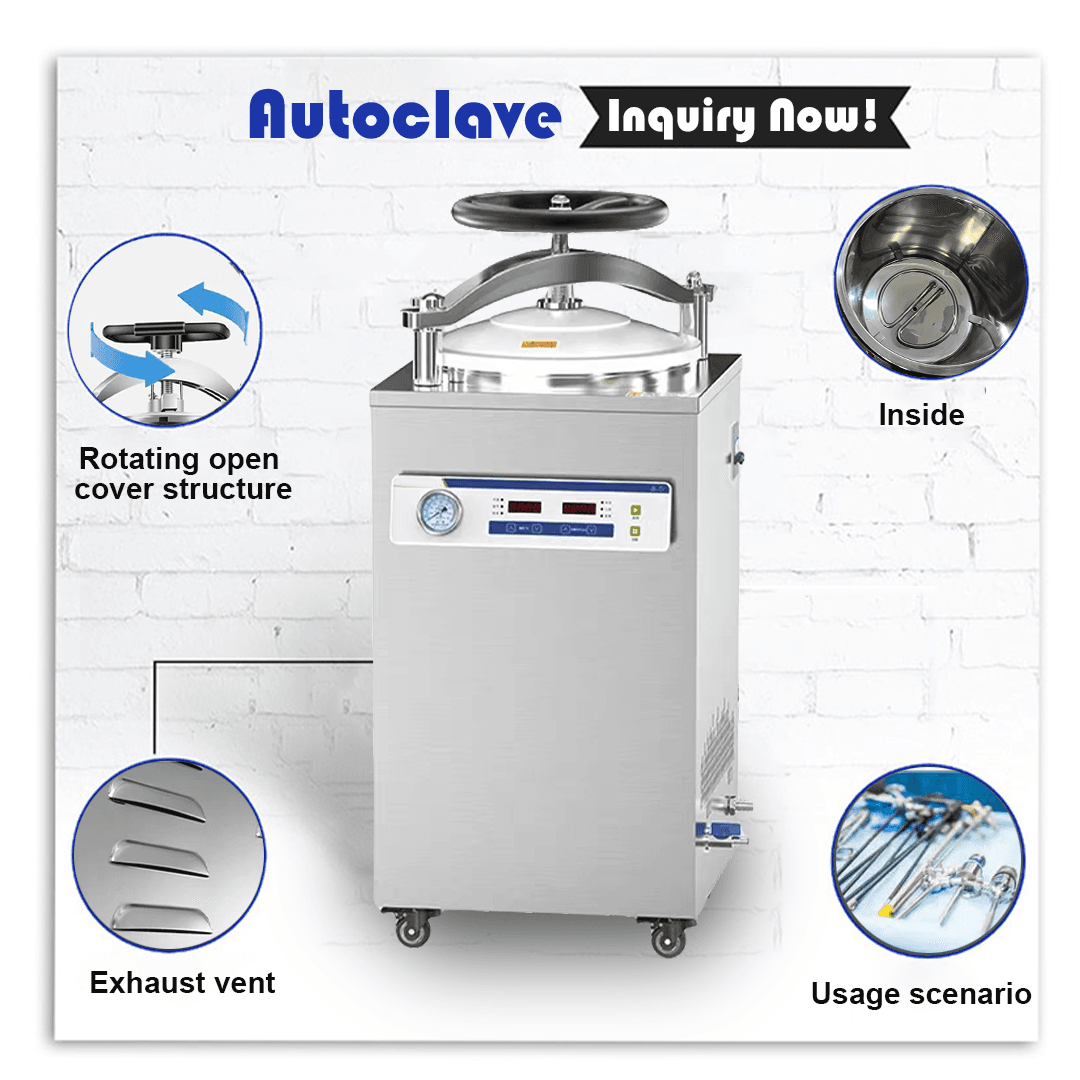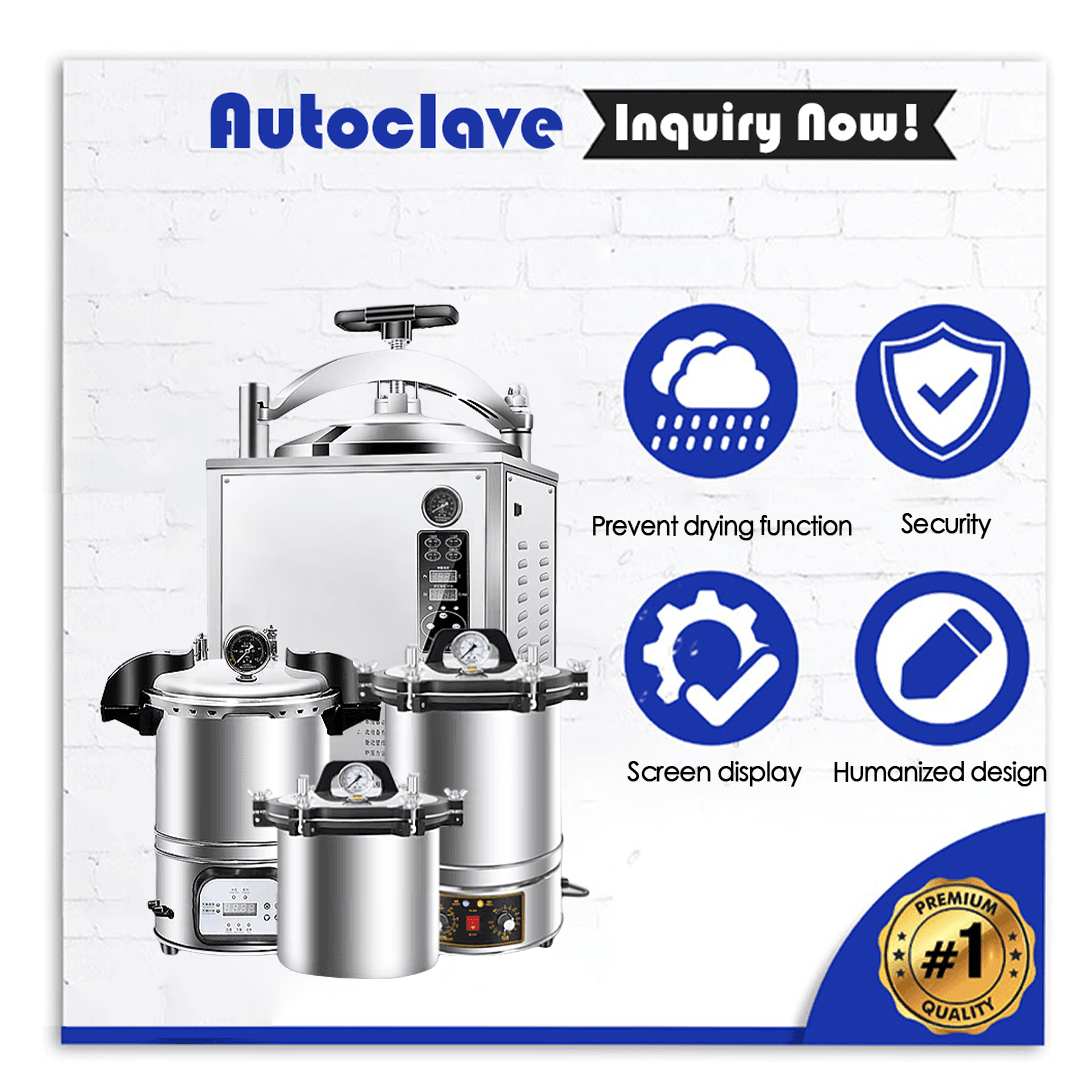
Medical equipment distributors along with dealers and procurement professionals must adhere to rigorous regulatory requirements and quality assurance standards. Meeting regulatory demands requires thorough knowledge of how temperature and pressure interact within autoclave systems. Autoclave temperature optimization knowledge benefits both equipment selectors and quality control managers by enhancing operational efficiency and safety.
Throughout this article, we will explore: • The fundamentals of autoclave temperature control The effectiveness of sterilization processes depends on how temperature and pressure interact within autoclave systems. • Key factors influencing optimal temperature settings • Practical tips and troubleshooting techniques • Case studies and industry best practices
This guide will equip you with advanced knowledge about setting and monitoring autoclave temperatures while teaching you to tackle common issues and produce high-pressure sterilization results that satisfy the pinnacle of medical safety and quality standards.
The autoclave temperature represents the sustained heat level within the chamber throughout the sterilization process. The temperature inside an autoclave works with pressure and time as critical elements to eliminate all forms of microbial life such as bacteria viruses and spores. The use of high-temperature steam in high-pressure autoclave systems makes controlling temperature crucial for effective sterilization.
Achieving precise temperature control requires more than hitting a set number because it demands proper heat distribution and uniform exposure across all items within the chamber. Temperature inconsistencies during the sterilization process can lead to incomplete sterilization which may endanger patient safety. Maintaining the recommended temperature range: • Ensures complete microbial inactivation • Reduces cycle failures and process variability • Complies with industry and regulatory standards The proper maintenance of temperature range maintains autoclave equipment performance and prolongs its service life.
Autoclave sterilization functions by using heat to break down proteins and eliminate cellular structures in microorganisms. Biological agents typically require exposure to temperatures ranging from 121°C (250°F) to 134°C (273°F) to achieve effective sterilization. The ideal temperature setting for an autoclave can change according to the load size and the design specifications of the autoclave as well as the particular conditions under which it operates. The sterilization cycle requires both specific temperature settings and adequate exposure time to ensure components reach thorough sterilization levels.
Optimal sterilization demands knowledge about elements affecting the temperature performance of autoclaves. Below are some key factors:
The autoclave chamber dimensions combined with the volume of items loaded influence the distribution of temperature within the chamber. Temperature gradients occur when larger chambers or densely packed loads prevent certain areas from achieving the required temperature. To overcome these issues: Organize items inside the autoclave to ensure steam flow remains unrestricted. • Avoid overloading the chamber • Use validated load configurations
Objects that either have high thermal mass or exhibit poor conductivity tend to slow down the penetration of heat. Surgical instruments, textiles, and complex assemblies often need longer sterilization cycles or higher temperatures to be properly sterilized. Critical to sterilization effectiveness is the adjustment of cycle parameters to match the thermal properties of the load.
The steam quality stands as a crucial element when optimizing temperature performance. The dryness fraction determines steam quality while poor steam production results in condensation and temperature variations. The proper operation of the steam generator through regular maintenance together with controlled water quality produces steam at the necessary temperature and pressure.
The autoclave’s temperature control reliability depends upon its design elements like insulation, heating components, and sensor configuration. Contemporary systems integrate sophisticated sensors alongside digital controllers to monitor temperature while dynamically regulating heating elements. Optimal performance of autoclave systems is achieved through the routine calibration and validation of their sensors.
The sterilization cycle’s start-up and stabilization phases depend on the surrounding environment’s temperature and humidity conditions. Facilities that work in areas with varying temperatures need extra controls or validation methods to maintain reliable autoclave performance at the desired set point.
The functionality of high-pressure autoclaves relies on the interaction between temperature levels and pressure settings. Achieving desired sterilization outcomes depends on understanding the relationship between temperature and pressure.
The autoclave chamber can safely handle higher temperature steam when operating under high-pressure conditions. Elevated pressure raises water’s boiling point which allows for lethal temperatures to destroy most microorganisms. The accelerated heat transfer process and improved heat penetration into complex materials happens in an enhanced steam environment.
The autoclave chamber’s stable pressure enables consistent temperature maintenance throughout the entire load. Modern autoclave systems include built-in feedback features to regulate both pressure and temperature at the same time. The mechanisms restore temperature levels when large loads or different material types cause temperature decreases.
Achieving an effective sterilization cycle requires simultaneous control of temperature and pressure conditions. Integrated digital displays and control software enable operators to monitor performance continuously by offering real-time data. • Detect deviations promptly • Adjust cycle parameters as necessary Keep documentation of records to support quality assurance and audits.
The implementation of practical measures allows for optimal temperature maintenance in the autoclave during the entire sterilization cycle.
Before using the autoclave, ensure that it has received proper maintenance and calibration.
Examine the load to ensure instruments are positioned for efficient steam distribution while avoiding excess loading.
Materials that react to temperature changes or need particular placement must undergo pre-conditioning prior to autoclave loading.
Adjust the autoclave settings to match the recommended temperature range that corresponds to the specific characteristics of your load as well as its materials.
Change the cycle time to reflect any increase in load mass or changes to the load’s physical characteristics.
The autoclave’s digital controls allow you to monitor chamber temperatures in various zones when such features are available.
Establish consistent maintenance checkpoints to verify sensor accuracy and heating element operations.
Maintaining a clean and descaled autoclave helps prevent obstructions that could disrupt heat distribution.
The system performance must be regularly tested using biological and chemical indicators to verify that each sterilization cycle achieves the required standards.
Document temperature readings and pressure measurements along with the processing time for each sterilization load.
Implement data logging methods to detect trends and spot potential problems that could disrupt sterilization operations.
Automated controls should establish feedback loops while alarms detect any deviations from acceptable parameters.
Despite following best practices, operators may encounter difficulties when running autoclaves. The identification of operational challenges enables the creation of strategic solutions that maintain the integrity of the sterilization cycle.
Challenge: Temperature variations across the autoclave chamber can cause certain materials to fail in attaining the necessary sterilization temperature. Mitigation Strategy: • Optimize load arrangement Implement validated container systems to achieve consistent steam distribution throughout the autoclave chamber. • Regularly recalibrate temperature sensors
Challenge: When sensors malfunction they produce incorrect readings which cause sterilization cycles to become ineffective. Mitigation Strategy: • Schedule frequent sensor maintenance checks • Replace outdated sensors Install multiple temperature monitoring systems to ensure consistent readings
Challenge: The system experiences delays in reaching optimal temperatures because heavier loads absorb more heat. Mitigation Strategy: • Adjust cycle times based on load configuration • Preheat the chamber before loading Modify temperature settings to achieve optimal control while adhering to safety standards.
Challenge: When steam quality is inadequate it leads to condensation formation and compromised heat distribution. Mitigation Strategy: • Maintain water quality controls and descaling routines • Regularly inspect steam generators and distribution systems • Verify steam dryness levels during cycle validation
The established medical instruments distribution company implemented an upgrade to its sterilization methods. The team needed to handle growing load densities while making sure autoclave temperatures adequately reached every piece of equipment. The facility achieved substantial cycle failure reduction by implementing upgraded load arrangement protocols along with enhanced sensor positioning and modern feedback control systems. This case demonstrates that thorough validation and specific temperature management modifications enhance the effectiveness of sterilization procedures.
A medical equipment procurement intermediary faced difficulties with inconsistent sterilization results. The intervention was straightforward: The facility implemented a real-time monitoring system to generate alerts whenever temperature limits were exceeded. The implementation of this proactive strategy enabled the facility to detect and address anomalies quickly so that all sterilization loads met required standards before approval. The success story demonstrates that digital integration and constant monitoring are crucial to manage dynamic sterilization environments effectively.
Leading autoclave facilities have developed these best practices based on accumulated operational experiences: Develop rigorous standard operating procedures for each step of the autoclave cycle. Keep comprehensive records of each sterilization cycle that document temperature variations. Implement training programs for staff to develop a deep understanding of temperature and pressure management complexities. Regularly update your protocols as new technologies emerge and industry standards evolve.
High-pressure sterilization processes require optimized autoclave temperatures to satisfy strict medical safety protocols. Manufacturers along with distributors dealers and procurement professionals must understand the complex interplay between temperature pressure load characteristics and steam quality. Effective sterilization can be consistently attained through systematic monitoring along with proper maintenance and regular calibration practices.
This comprehensive analysis of autoclave temperature regulation underscores the importance of ongoing enhancement and commitment to best practices. The safe and efficient sterilization of medical instruments requires thorough control and understanding of multiple interrelated variables. The implementation of strong protocols protects patients while simultaneously enhancing operational performance and reducing the chance of contamination or failure in processes. Medical sterilization operations achieve significant performance enhancements when current technologies and industry insights are applied.
For most standard sterilization cycles, a temperature range of 121°C (250°F) to 134°C (273°F) is typically recommended. However, the optimal temperature may vary based on the load characteristics, material composition, and specific autoclave models.
Ensuring even temperature distribution involves proper load arrangement, avoiding overloading, and allowing adequate space for steam circulation. Regular calibration of sensors and the use of validated load configurations also contribute to consistent temperature distribution throughout the chamber.
If temperature fluctuations occur, verify that the sensors are properly calibrated and functioning accurately. Check for issues in steam quality or distribution, and review the load arrangement. Additionally, inspect the maintenance logs to confirm that the autoclave has been descaled and serviced according to manufacturer guidelines.
For further inquiries or personalized advice on optimizing your autoclave temperature settings, please feel free to reach out to us at inquiry@shkeling.com, واتساب +8618221822482أو قم بزيارة موقعنا الإلكتروني على https://autoclaveequipment.com/.
Thank you for reading, and we look forward to helping you achieve the highest standards in high-pressure sterilization efficiency.

Healthcare facilities must adhere to rigorous hygiene and sterilization standards without exception. Medical equipment distributors and procurement professionals must understand the tools that maintain standards to deliver value to healthcare

Maintaining sterile medical tools and equipment stands as the most important practice for preventing infections and ensuring patient safety in healthcare settings. Medical equipment distributors along with dealers and procurement

The fast-paced healthcare sector operates under strict regulations which demand that sterility maintenance stands as a primary concern to protect patient safety and ensure compliance with operational standards. Medical equipment

Sterilization equipment serves as an essential tool in healthcare settings to maintain cleanliness standards and protect patients. Medical equipment distributors together with dealers and procurement specialists need to know the

Autoclaves serve as essential components of sterilization processes in healthcare facilities through high-pressure steam to destroy pathogens on medical instruments and other materials. Medical equipment distributors and procurement specialists must

Healthcare environments must prioritize sterilization because it protects patients and staff by removing infectious pathogens from medical devices and materials. The autoclave stands out as one of the best tools